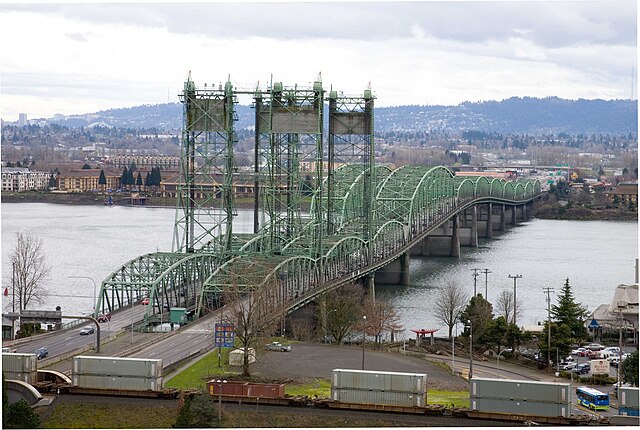The Columbia River Crossing (CRC) was a joint freeway megaproject from 2005 to 2013 between Oregon and Washington, which proposed to widen and modernize Interstate 5 where it crossed the Columbia River. Central to this was the replacement of the Interstate Bridge, a pair of through-truss bridges. The northbound bridge dates to 1917, and its nearly identical companion was opened in 1958 to carry southbound traffic. The bridges, the earlier of which pre-dates the U.S. Highway System by nine years, served as the crossing for U.S. Route 99 before the establishment of the Interstate Highway System and Interstate 5 as the new route number. Each of the current bridges currently has three traffic lanes and no emergency lanes. Each bridge also has a vertical-lift draw bridge span on the Washington State side of the river to allow shipping traffic access upriver.
Conceptual illustration for a possible deck truss bridge, seen from the southeast
At an April 25, 2011, news conference in front of the Interstate Bridge, Washington Governor Christine Gregoire and Oregon Governor John Kitzhaber announced their plan for the project in 2013.
Oregon Governor John Kitzhaber signs HB2800, authorizing funding for the project. Looking on is Congressman Cliff Bentz (then State Representative), Governor Tina Kotek (then Speaker of the House), and others
The Interstate Bridge is a pair of nearly identical steel vertical-lift, Parker through-truss bridges that carry Interstate 5 traffic over the Columbia River between Vancouver, Washington and Portland, Oregon in the United States.
Looking south from Vancouver
Postcard showing streetcar tracks, period autos
Interstate Bridge in 1973 as seen from the now demolished Thunderbird Hotel on the Oregon side
A barge passing under the raised lift spans







